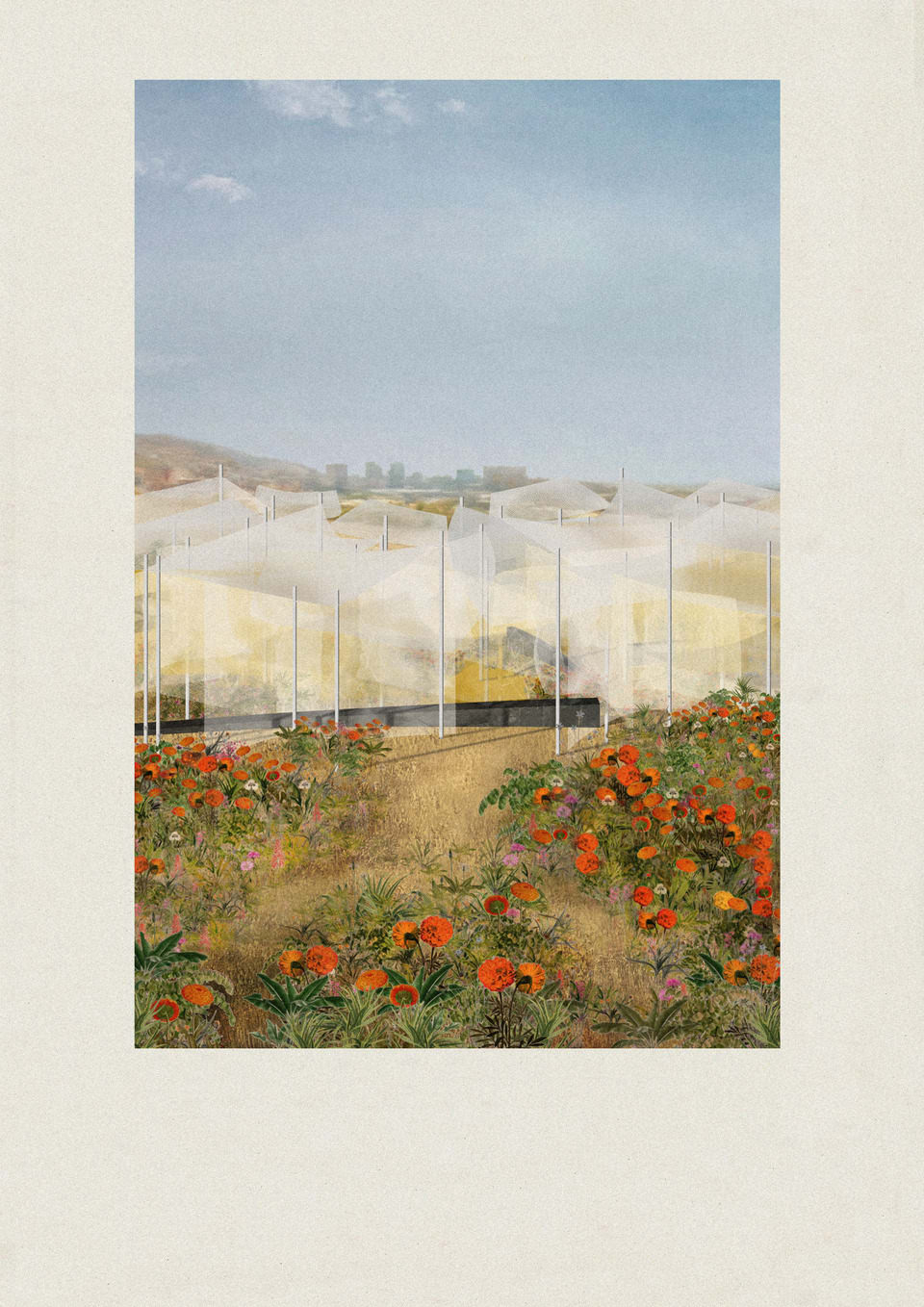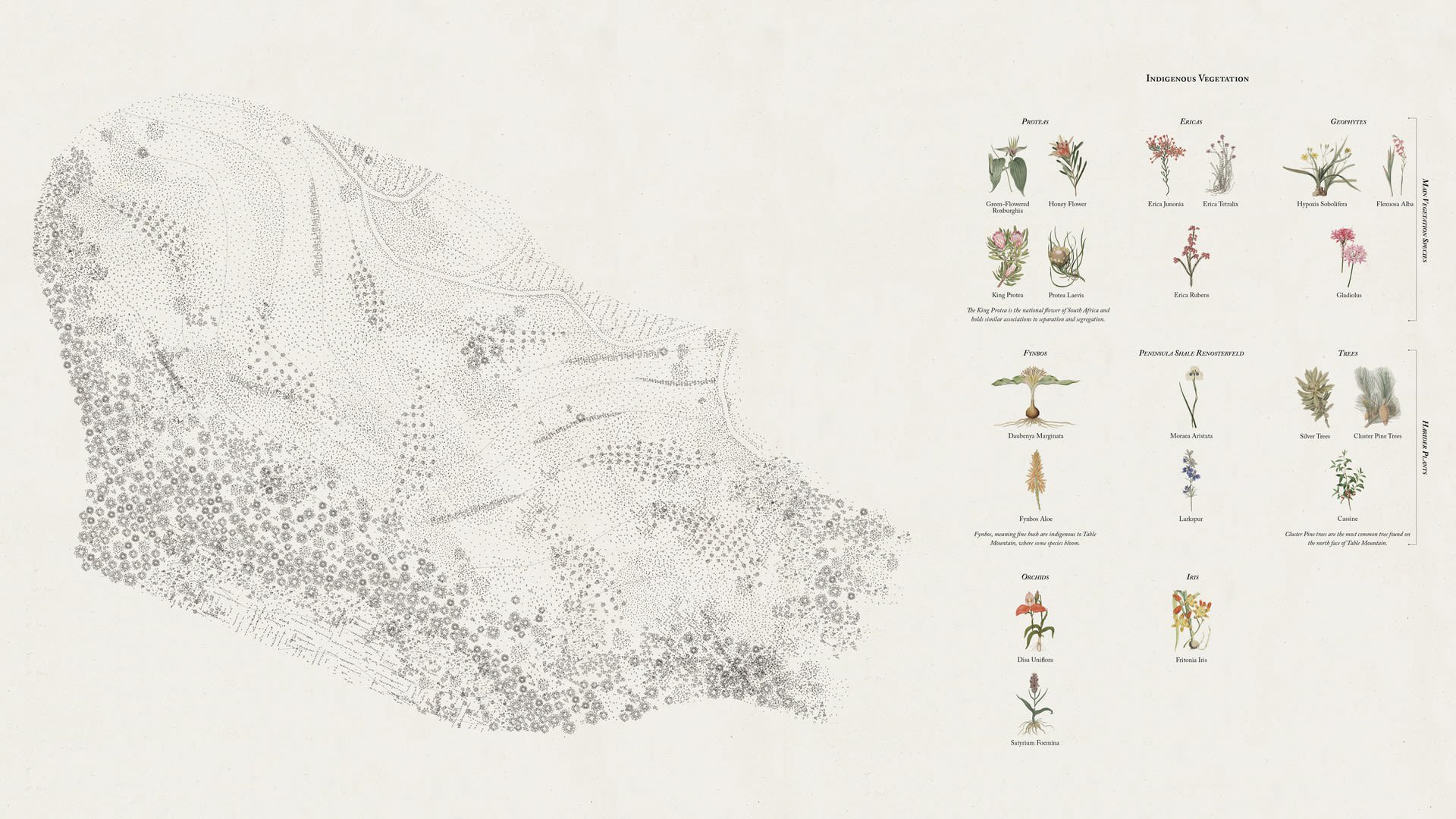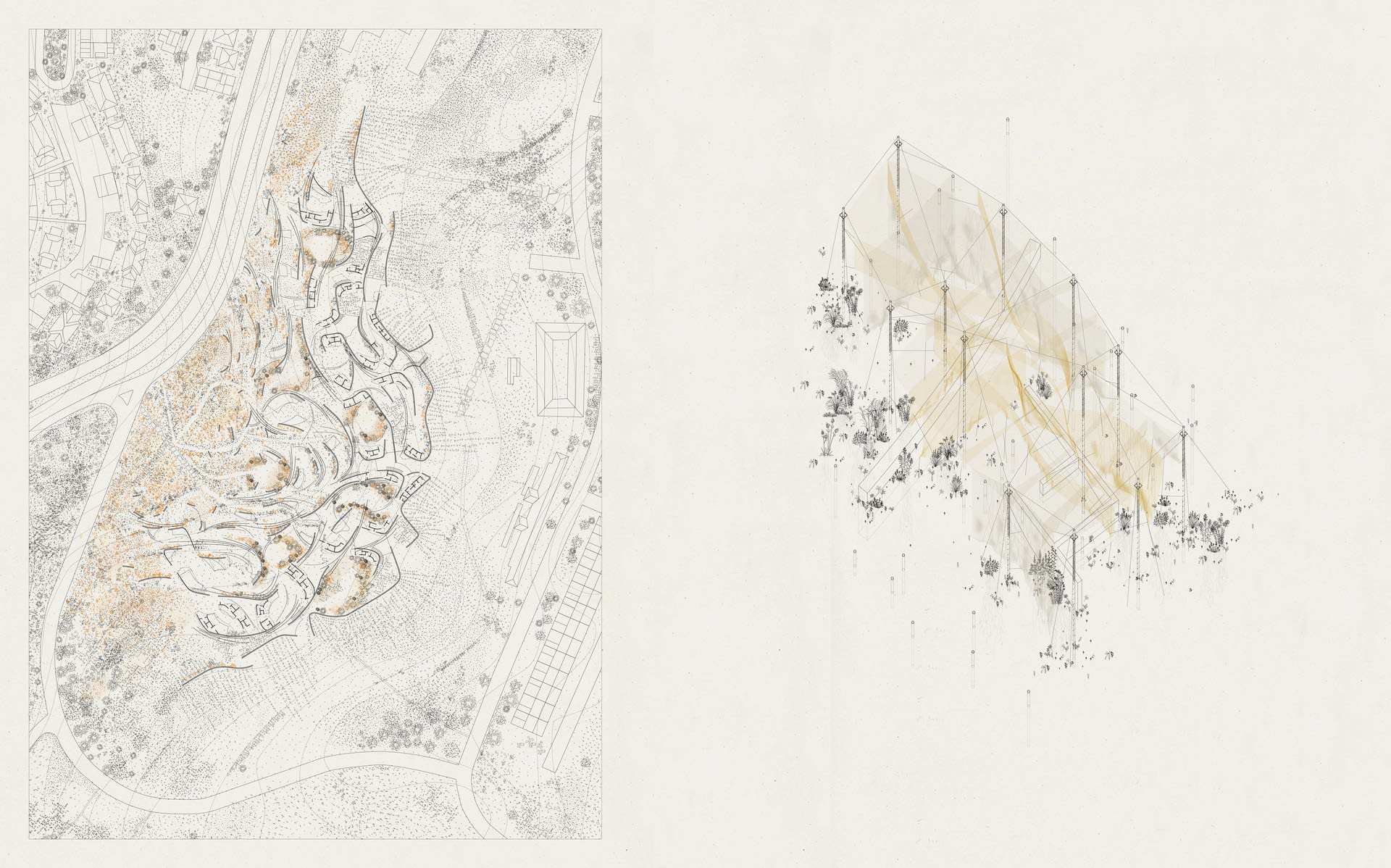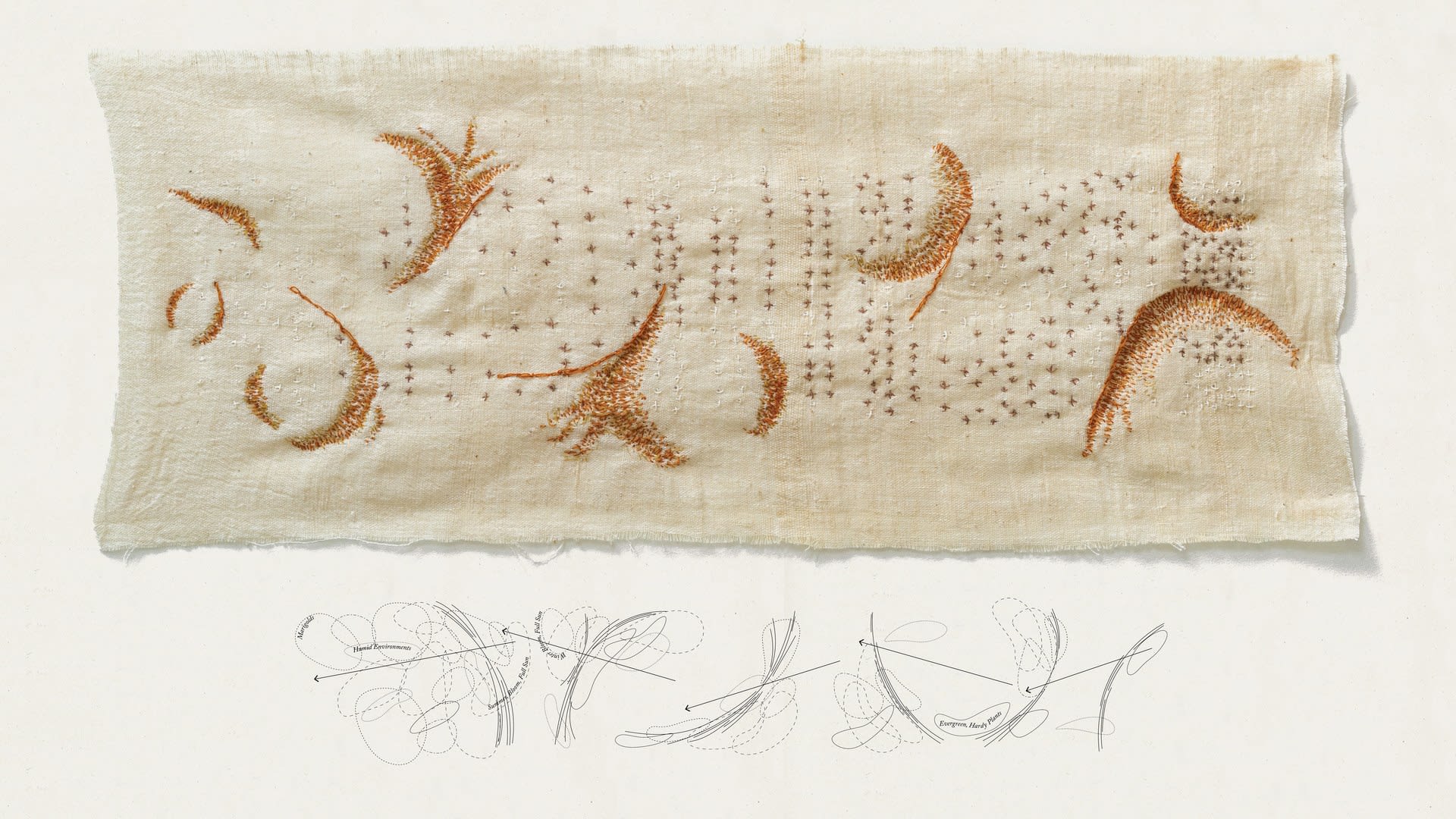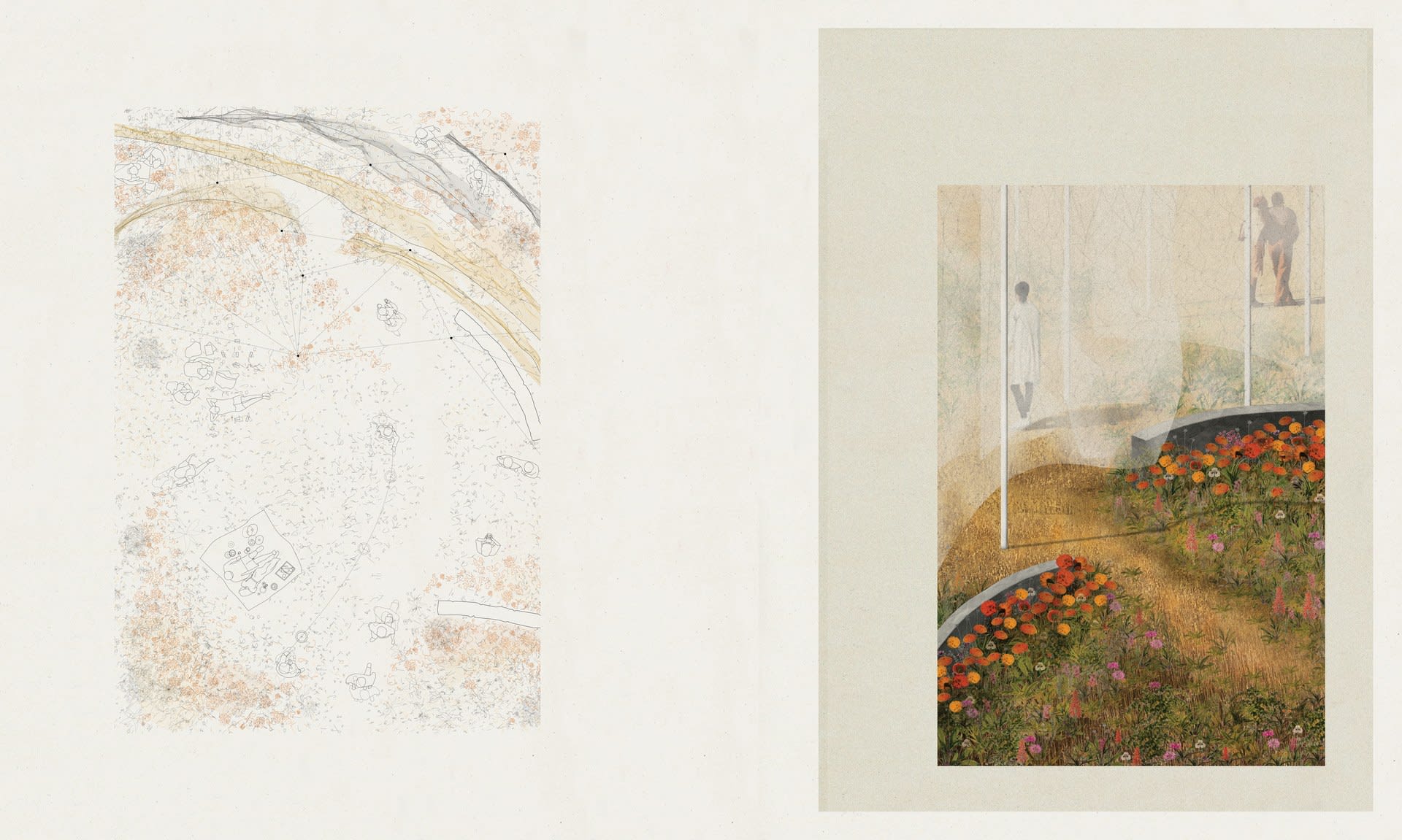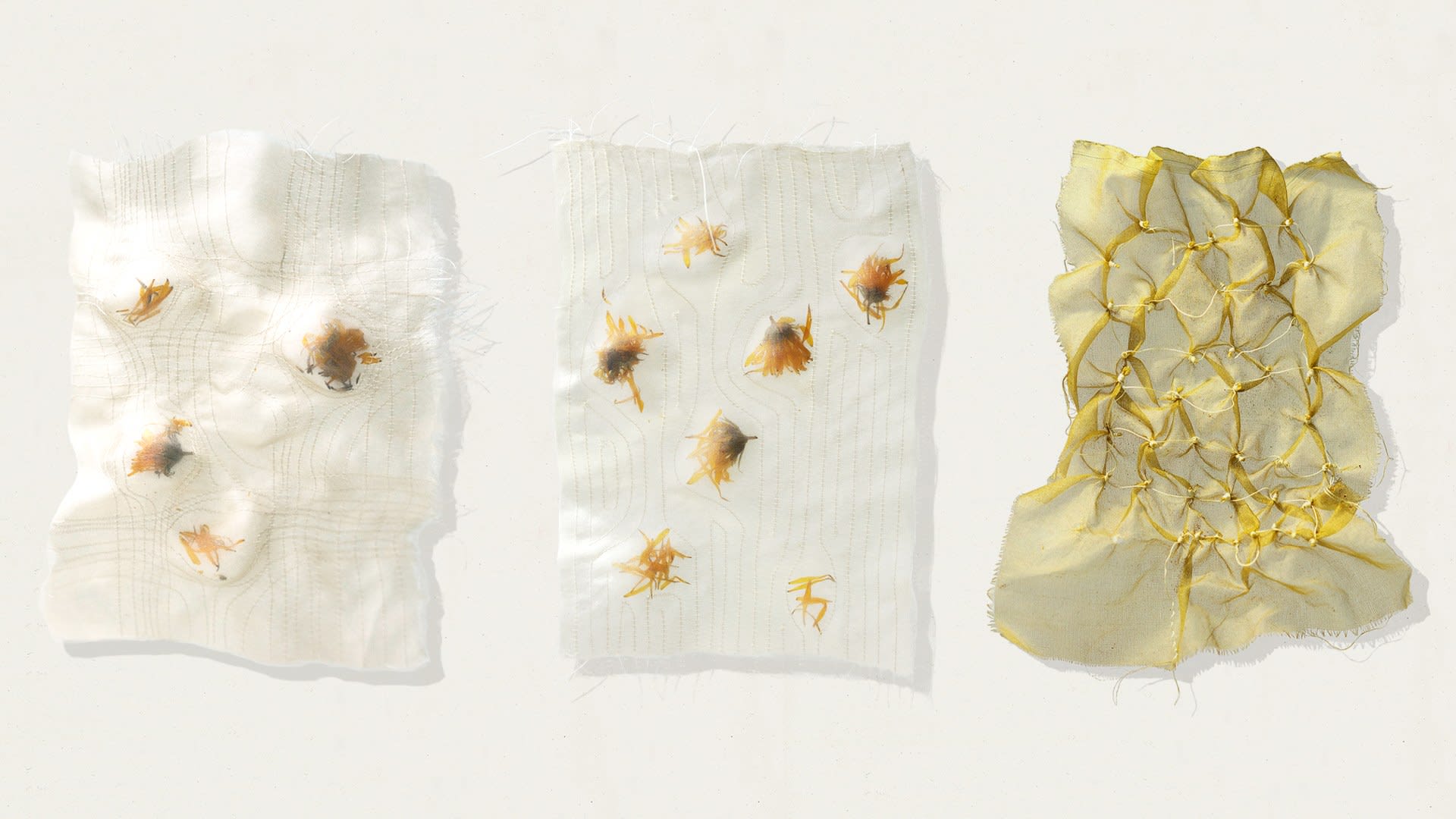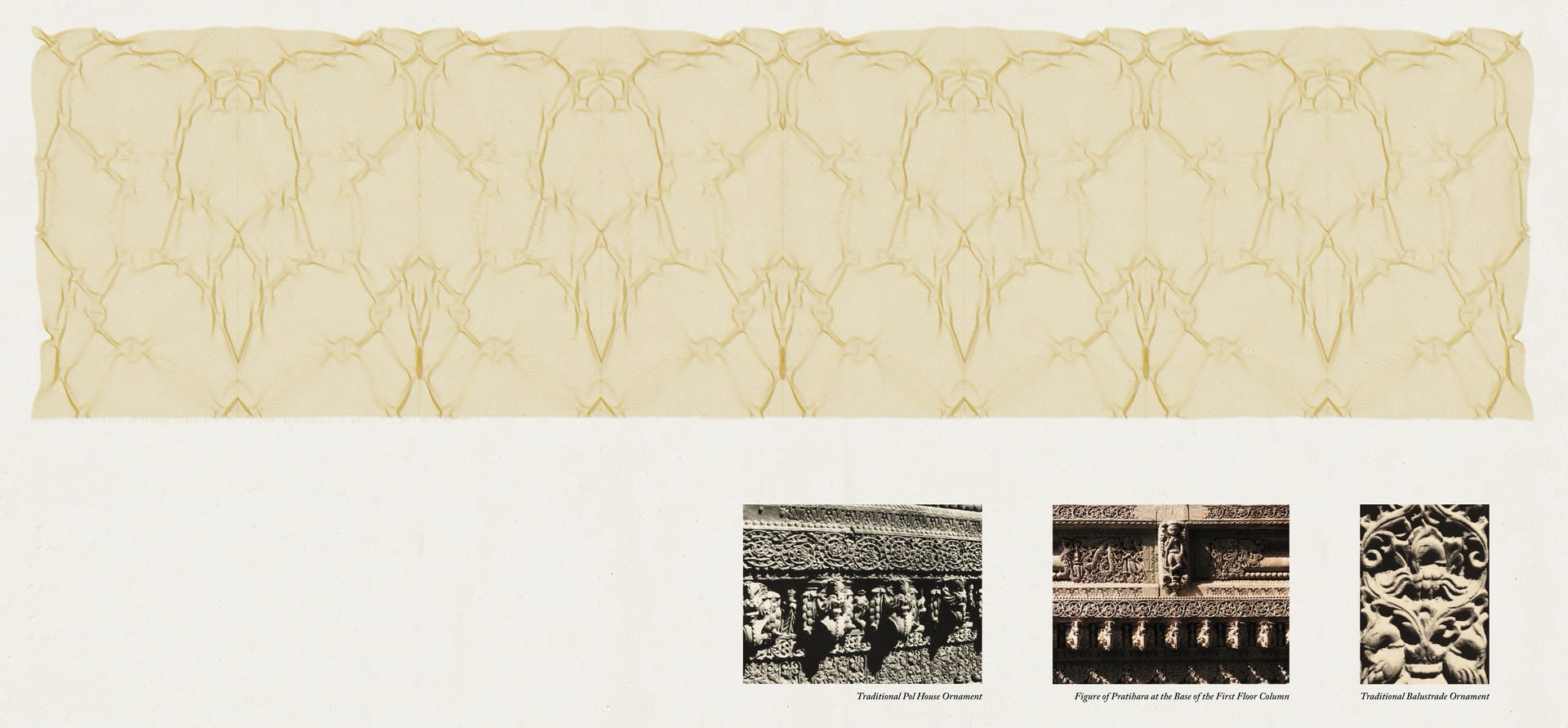A field of marigolds, wrapped and layered with veils of volumetric textiles, challenges and subverts the perception of the existing land being a space of divide. The introduction of the marigold to this new form of inhabited landscape holds the power to reclaim the land by subverting the view of nature as being a space of divide. The heightened political nature of landscape within South Africa no longer can be seen as idle nor dividing, but rather it becomes a form of resistance through its inhabitation, carving out spaces for the wider community to be together.
Designed under the framework of the Indian diaspora and subcultural groups like Kutti Collective, the new form of landscape becomes a form of resistance through the creative, celebratory, and artistic production of the individuals and wider community across Cape Town. During Apartheid, natural elements within the landscape were used to enforce racial separation leading nature to be strongly tied to feelings of divide. By appropriating one of these sites, the inhabitation of the landscape becomes a new form of resistance. Here, 250 inhabitants can live, create, and celebrate one another. The new form of inhabited landscape brings together layers of marigolds, textiles, indigenous vegetation, and hardened grounds, allowing disparate groups to come together on a site that was once a political tool of division. The marigold, a flower brought to South Africa by the Indian diaspora, embodies a symbolic connection between places. Nurtured by the hands of the diaspora, the marigold has intertwined culture and context. Identities become hybridised, never complete and always engaged.
A linear sequence of spaces draws from the Pol House typology, moving from a built defined edge at the base of the hill to an open field above. Curved, stone retaining walls create spaces for inhabitation while allowing earth to hold onto water despite the dry climate, creating opportunities for new and indigenous plants to establish themselves along the slope. Intricate layers of textiles fragment this linear sequence forming moments of in-betweeness. These layers of volumetric textiles blur the peripheral edge, creating moments of temporary enclosure for collective engagement between defined spaces of artistic production and collective moments of ambiguity. The temporality and shifting nature of both the plants and textiles creates a symbiotic relationship between the landscape, construction and its inhabitation. As the marigold blooms again, the light temporal textile structures are constructed, leaving tracings along the heavy elements embedded within the land.
The new form of landscape takes on many forms, a field, a park, a living room for collective artists, and a house for creative experiments. It is through these different forms of landscape that new identities tied to the specific piece of land emerge. Distorted intensities of colour, openness, and density mediate between blurred conditions, where celebratory and creative gatherings can now occupy and resist the divided land.

